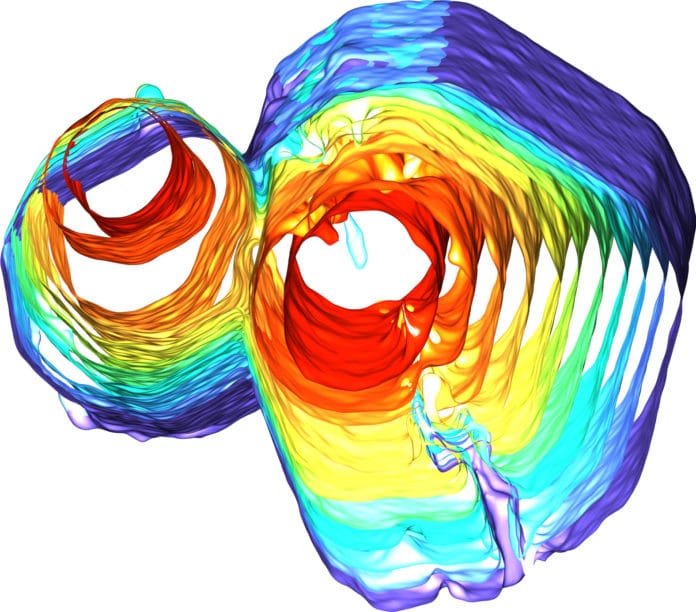Quasicrystals are a new class of solid that exhibits symmetries forbidden to ordinary periodic crystals. They have ordered structures but not the repeating patterns of ordinary crystals.
It is also possible to manufacture them with exciting properties. They can be ultra-hard or super-slippery. They can absorb heat and light in unusual ways and exhibit exotic electrical properties, among a host of other possibilities.
When the quasicrystals were first commercialized, makers found a problem: tiny cracks between crystals, called grain boundaries. Such cracks invite corrosion, causing quasicrystals susceptible to failure.
Since then, the commercial development of quasicrystals has been mostly shelved.
Now, a University of Michigan-led research team suggests a way to make much larger quasicrystals than were possible before, without any defects. This way could lead to the commercial resurrection of quasicrystals.
In this study, scientists found that small quasicrystals can collide and meld together under certain conditions. It hence led to the formation of a single large crystal with none of the grain boundary imperfections found in groups of smaller crystals.
Ashwin Shahani is a U-M assistant professor of materials science and engineering and chemical engineering and a corresponding author on the paper. He said, “The phenomenon came as a surprise during an experiment designed to observe the formation of the material.”
“It looks like the crystals are healing themselves after the collision, transforming one type of defect into another type that eventually disappears altogether. It’s extraordinary, given that quasicrystals lack periodicity.”
The crystals start as pencil-like solids measuring a fraction of a millimeter. Using 3D using X-ray tomography, scientists observed the crystals suspended in a molten aluminum, cobalt, and nickel mixture.
After the mixture cools, the tiny crystals collide with each other and meld together. This led to the forming a single large quasicrystal that’s several times larger than the constituent quasicrystals.
The research team observed the process several times. They then replicated it virtually with computer simulations. By running each simulation under slightly different conditions, they were able to identify the exact conditions under which the tiny crystals would meld into larger ones.
They found that the tiny pencil-like crystals must face each other within a specific range of alignment to collide and coalesce.
Sharon Glotzer, the John Werner Cahn Distinguished University Professor of Engineering and a corresponding author on the paper, said, “It’s exciting when both experiments and simulations can observe the same phenomena happening at the same length and time scales. Simulations can see details of the crystallization process that experiments can’t quite see, and vice versa, so that only together can we fully understand what’s happening.”
However, it will take a few years to become commercial, but the simulation data could ultimately prove useful in efficiently developing a process to produce large quasicrystals in production-scale quantities.
Shahani said, “The use of sintering, a well-known industrial process where materials are melded together using heat and pressure. It’s a far-off goal, but the new study opens a new avenue of research that could one day make it happen.”
Journal Reference:
- Han, I., Wang, K.L., Cadotte, A.T. et al. Formation of a single quasicrystal upon collision of multiple grains. Nat Commun 12, 5790 (2021). DOI: 10.1038/s41467-021-26070-9
